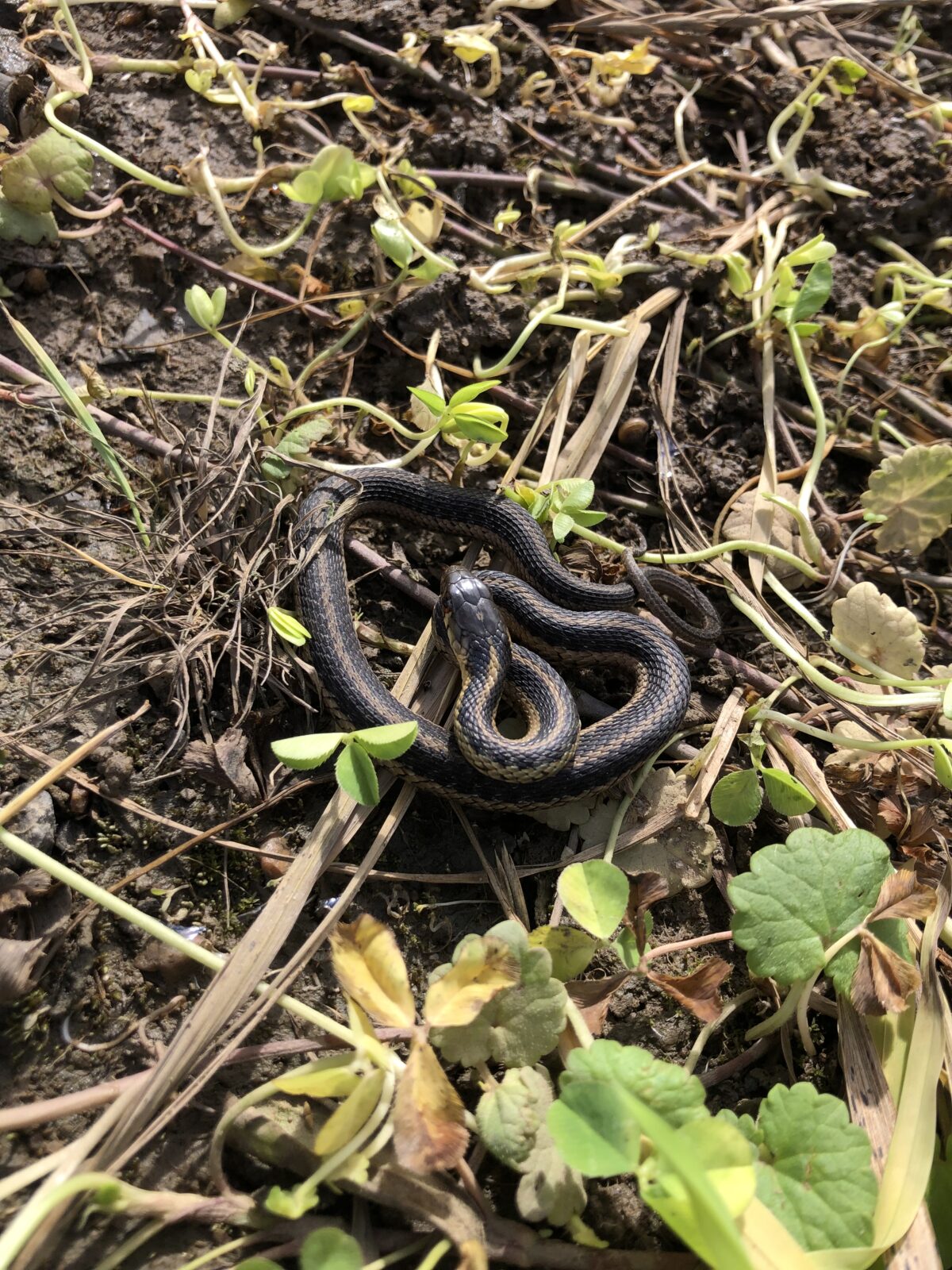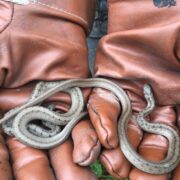QUEBEC’S SNAKES
An animal as slender as a tissu in the wind, moving like waves on water and weaving between obstacles. Yes, it’s the snake! Did you know that there are eight species of snake in Quebec? But they’re all called «couleuvre» in french, instead of the snake traduction « serpent».
The name couleuvre is given to a specific family of snakes. This family is considered the most evolved of snakes, and also the most diverse. In Quebec, we are fortunate to have eight species of snake. [1]
- Brown snake
- Common garter snake
- Water snake
- Northern ribbonsnake
- Eastern milksnake
- Red-bellied Garter Snake
- Green snake
The brown snake is threatened, the water snake and the Northern ribbonsnake are vulnerable, and three other species are likely to acquire vulnerable or threatened status in Quebec [2].

Common garter snake, Bureau d’écologie appliquée and T2 EnvironnementBureau d’écologie appliquée and T2 Environnement
In the snake’s skin
Snakes shed their skin. This means they take off their old layer of skin. This dead skin is called the exuvium. Young snakes produce several exuviae in their first year of life, as they grow rapidly.
To grow, Quebec snakes feed on live prey from an early age. The only exception is the Eastern milksnake, which suffocates them. Each species has its own food preferences, ranging from frogs, salamanders and toads to rodents, insects, snails and/or earthworms.
To swallow prey sometimes larger than their head, snakes have a removable jaw and flexible ligaments. They also lack a bone, the sternum, to make room for meals. [1]
Undulating in its environment
Snakes’ tongues are elongated Y-shaped. It’s called bifid because it’s cut in two at the tip. The tongue is very useful for reffering the snake in his environment. Snakes throw it in the air and then carry it to the nasal cavities. In this way, the tongue collects scent molecules that inform the snake of what’s around.
When a snake feels threatened, caught or frightened, it releases a foul-smelling liquid. The smell is so unpleasant that it scares humans away too! Other defense mechanisms exist, depending on the species. Some will bite, but Quebec snakes are not venomous. A bite is no more dangerous than a cat’s one. [1]
Warming up with the sun
Snakes are unable to regulate their body temperature like humans. They need the heat of the sun to keep them warm. That’s why we sometimes see them on rocks in summer. In Quebec’ winters, snakes hide underground in burrows and hibernate like bears. These shelters are called hibernacula.
Snakes can be observed in many places. Some live in fields, wastelands or disturbed environments, others prefer forests and still others settle in wetlands and watery environments, such as ponds, marshes, peat bogs or the shores of lakes and rivers. [1] Learn to recognize them with L’Atlas des amphibiens et reptiles du Québec (in French).
T2 often carries out snake inventories in the field. We use two inventory methods: active search and the installation of artificial shelters. The active search involves scouring the site and lifting up any potential shelters where the snakes might be hiding. You also need to be alert and constantly watch the ground, as snakes can sometimes be seen moving. To set up artificial shelters, we install asphalt shingles in habitats suitable for snakes, and check to see who has moved in.
[1] J.-F. Desroches et D. Rodrigue. (2004). Amphibiens et reptiles du Québec et des Maritimes. Quintin. Waterloo. 288p.
[2] Gouvernement du Québec. (2024). Liste des espèces fauniques. [Online]. https://www.quebec.ca/agriculture-environnement-et-ressources-naturelles/faune/animaux-sauvages-quebec/liste-des-especes-fauniques?no_cache=1&tx_solr%5Bfilter%5D%5B0%5D=species_interest%3ACouleuvres
Written by Audrey Thériault






